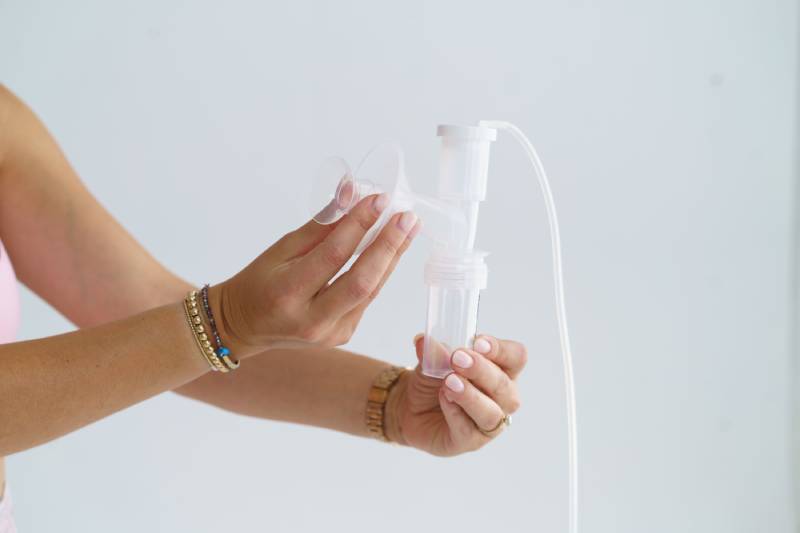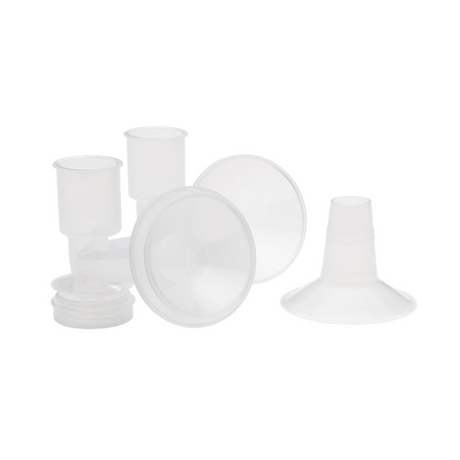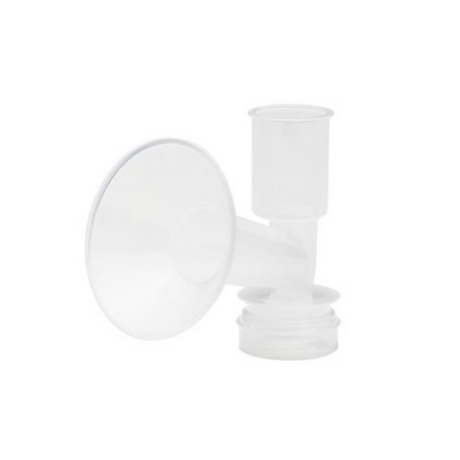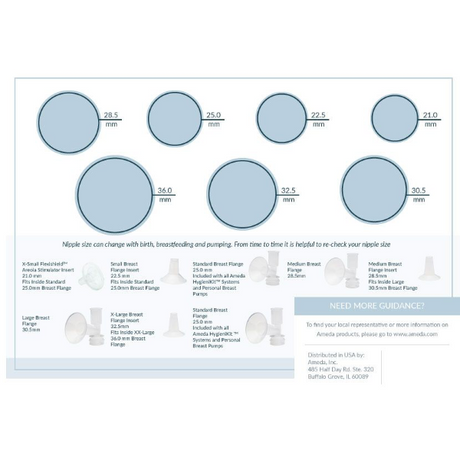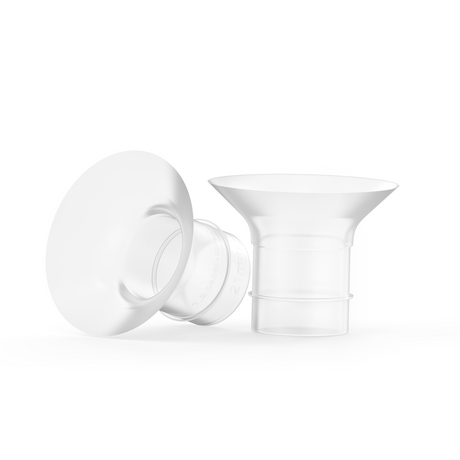Published:
Finding the right breast pump flange size is essential for a comfortable and effective pumping experience. A properly fitting flange ensures efficient milk expression, prevents nipple pain, and reduces the risk of clogged ducts or tissue damage. Many breastfeeding mothers struggle with discomfort or low milk output, not realizing that an incorrect flange size could be the root cause.
Ameda, a pioneer in hospital-grade breast pumps, has been a trusted leader in breastfeeding innovation for decades. With a commitment to supporting nursing mothers, Ameda offers a variety of Breast Pump Flange Soft Inserts to help ensure the best fit for every mom. Understanding how to measure for the correct size and recognizing the signs of an ill-fitting flange can make a significant difference in your breastfeeding journey.
Why Flange Size Matters
Using the wrong breast pump flange size can lead to discomfort and inefficiency during pumping sessions. When the flange is too small, the nipple may rub against the sides of the tunnel, causing irritation, pain, and even damage over time. This can also restrict milk flow, leading to decreased milk output and frustration for mothers trying to establish or maintain their supply.
On the other hand, if the flange is too large, too much of the areola is drawn into the tunnel, which can cause swelling, inefficient suction, and reduced milk expression. An oversized flange may also lead to discomfort and an increased risk of engorgement or clogged milk ducts. Finding the correct flange size helps maintain optimal milk flow and prevents unnecessary discomfort while pumping.
How to Measure for the Right Flange Size
Determining the proper breast pump flange size starts with measuring the nipple diameter before and after pumping. Ameda recommends measuring the nipple at rest and after a short pumping session to account for any natural expansion that occurs during expression.
Once you have the measurement, selecting the appropriate flange size should allow a comfortable fit where the nipple moves freely within the tunnel without excessive areola being pulled in. The goal is to maintain a gentle but effective suction that supports efficient milk extraction without pain or discomfort.
Flange sizing may also change over time. Breast tissue fluctuates postpartum, and moms who experience swelling, engorgement, or changes in nipple size should reassess their flange fit periodically. Keeping track of any discomfort or a sudden drop in milk output can indicate the need for a different size.
For additional help, consult our Ameda Flange Sizing Guide to help you find the perfect fit!
Ameda’s Breast Pump Flange Options
Ameda understands that breastfeeding is not one-size-fits-all, which is why we offer a range of hospital-grade breast pump flanges designed for maximum comfort and efficiency. Our flanges, including our Ameda Universal Soft Breast Pump Flange Inserts, are crafted from soft, flexible materials that reduce irritation while maintaining a secure seal for optimal suction.
With multiple flange sizes available, mothers can select the best fit for their needs and easily switch sizes as their bodies change. Ameda flanges are compatible with all of our high-quality breast pumps, including hospital-grade pumps, standard electric pumps, and portable pumps, ensuring a seamless and comfortable pumping experience.
Common Challenges and Solutions
Even with the right breast pump flange, some mothers may experience issues that affect their pumping efficiency. If discomfort persists despite using the correct flange size, adjusting the suction level on your breast pump can help. Ameda’s hospital-grade breast pumps feature customizable settings, allowing moms to find the perfect balance between comfort and effectiveness.
For those struggling with low milk output, ensuring proper positioning and flange fit can make a significant difference. Some moms find that switching to a different flange size or using a soft insert provides a better seal and more effective suction. Consulting with a lactation consultant can also provide personalized recommendations to improve pumping success.
Frequently Asked Questions About Flange Sizing
How do I know if my breast pump flange fits correctly?
A well-fitting flange should allow your nipple to move freely within the tunnel without rubbing against the sides or being pulled too far into the pump. If you experience pain, swelling, or discomfort, you may need a different size.
Can I use the same flange size for both breasts?
Not always. Some moms find that one breast requires a different flange size due to natural variations in breast and nipple shape. It’s important to assess the fit for each breast individually.
What happens if my flange size changes postpartum?
Hormonal shifts, engorgement, and regular pumping can all affect nipple size over time. If you notice discomfort or a decrease in milk output, re-measuring your nipple and adjusting your flange size may help.
Does Ameda offer different flange sizes for hospital-grade pumps?
Yes! Ameda provides a variety of flange sizes that work with hospital-grade pumps, standard electric pumps, and portable pumps, ensuring every mom can find the best fit for her needs.
Find the Flange Size You Need with Ameda
Choosing the right breast pump flange size is a crucial step in ensuring a comfortable and effective pumping experience. By measuring correctly, recognizing the signs of an improper fit, and selecting from Ameda’s hospital-grade breast pump flanges, moms can enhance their milk expression and overall breastfeeding journey.
With 50 years of expertise and innovation, Ameda remains committed to supporting nursing mothers with the best tools and resources. Explore our selection of breast pump flanges today and experience the difference a properly fitted flange makes in your breastfeeding journey! Contact us today to learn more.

